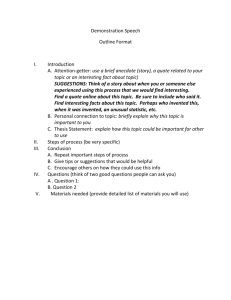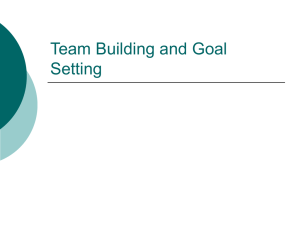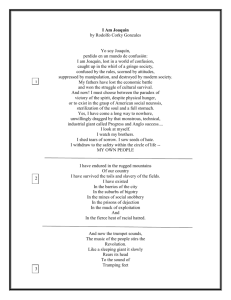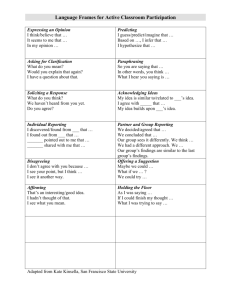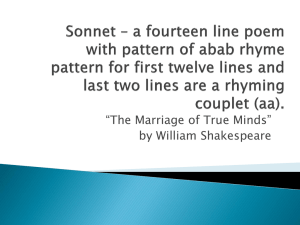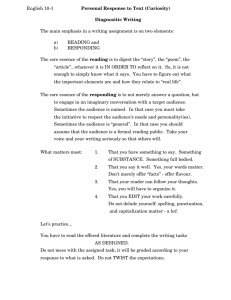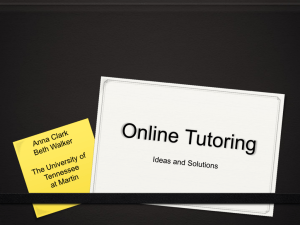Speech Introductions & Conclusions Guide
advertisement
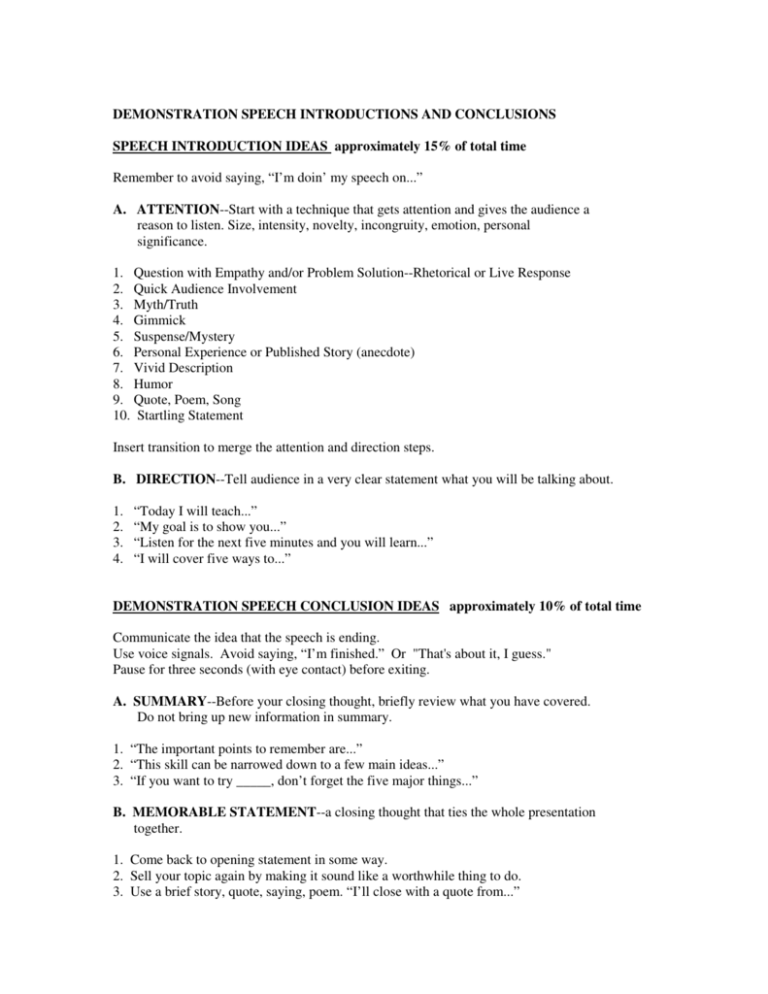
DEMONSTRATION SPEECH INTRODUCTIONS AND CONCLUSIONS SPEECH INTRODUCTION IDEAS approximately 15% of total time Remember to avoid saying, “I’m doin’ my speech on...” A. ATTENTION--Start with a technique that gets attention and gives the audience a reason to listen. Size, intensity, novelty, incongruity, emotion, personal significance. 1. Question with Empathy and/or Problem Solution--Rhetorical or Live Response 2. Quick Audience Involvement 3. Myth/Truth 4. Gimmick 5. Suspense/Mystery 6. Personal Experience or Published Story (anecdote) 7. Vivid Description 8. Humor 9. Quote, Poem, Song 10. Startling Statement Insert transition to merge the attention and direction steps. B. DIRECTION--Tell audience in a very clear statement what you will be talking about. 1. 2. 3. 4. “Today I will teach...” “My goal is to show you...” “Listen for the next five minutes and you will learn...” “I will cover five ways to...” DEMONSTRATION SPEECH CONCLUSION IDEAS approximately 10% of total time Communicate the idea that the speech is ending. Use voice signals. Avoid saying, “I’m finished.” Or "That's about it, I guess." Pause for three seconds (with eye contact) before exiting. A. SUMMARY--Before your closing thought, briefly review what you have covered. Do not bring up new information in summary. 1. “The important points to remember are...” 2. “This skill can be narrowed down to a few main ideas...” 3. “If you want to try _____, don’t forget the five major things...” B. MEMORABLE STATEMENT--a closing thought that ties the whole presentation together. 1. Come back to opening statement in some way. 2. Sell your topic again by making it sound like a worthwhile thing to do. 3. Use a brief story, quote, saying, poem. “I’ll close with a quote from...”

